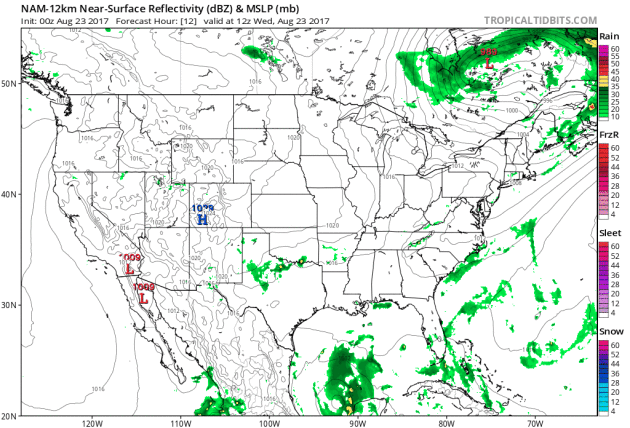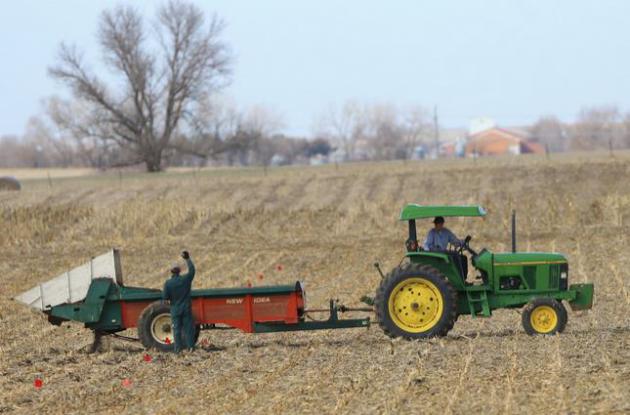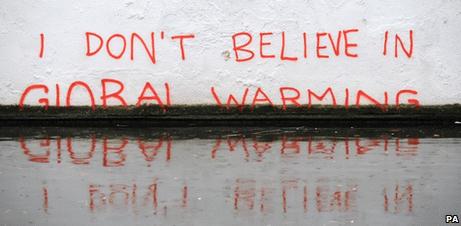80 F. average high on August 22.
83 F. maximum temperature on August 22, 2016.
August 23, 1955: Hail in Houston County results in drifts up to a foot deep at Rushmore.
Severe Storm Watches, Warnings and Emergencies
U.S. taxpayers spend about $15 every year for the privilege of having a state-of-the-art National Weather Service; arguably the best on the planet. We can debate which weather model is doing the best job, but when it comes to warning citizens of life-threatening weather, nobody does in better than NOAA.
U.S. taxpayers spend about $15 every year for the privilege of having a state-of-the-art National Weather Service; arguably the best on the planet. We can debate which weather model is doing the best job, but when it comes to warning citizens of life-threatening weather, nobody does in better than NOAA.
Which is good,
considering the USA experiences more severe weather than any nation on
Earth.
Why? Europe's Alps provide a natural east-west barrier that slows
the movement of opposing airmasses. Not so in America; the Rockies run
north-south, meaning Gulf moisture can quickly mix with Canadian air,
resulting in atmospheric fireworks.
A watch means
"watch out"; conditions are ripe. Warnings mean severe weather is
imminent, but an "emergency" is even more dire, implying a potential
weather disaster.
A stray shower may pop later
today, but Day 1 of the fair looks cool and comfortable. Showers return
for the weekend, but don't complain too loud. Models are hinting at a
tropical storm or hurricane for Texas and Louisiana Saturday into
Tuesday.
Try to keep a little perspective.
Cause For Concern.
Not panic - not yet, but NOAA models bring a strong system into the
western Gulf of Mexico by the end of the week. Gulf of Mexico water
temperatures are warmer than average with minimal wind shear aloft -
meaning conditions are ripe for significant strengthening. Map above
valid Saturday morning, courtesy of NOAA's NAM model and
Tropicaltidbits.com.

Tracking Harvey.
Suddenly the garden-variety showers and T-storms aren't quite as
menacing. Not with a potentially major storm forecast to spin up in the
western Gulf of Mexico in the coming days. It's unclear whether there
will be enough runway for a full-blown hurricane, but we certainly can't
rule that out. Either way slow forward motion of the storm (it may
stall over Texas and Louisiana for several days) will increase the risk
of severe - even epic flooding.
Trouble for Texas.
Although this doesn't appear to be a major hurricane scenario, I'm
concerned about the very slow movement predicted for this next tropical
system (Harvey). The storm may stall over Texas and Louisiana for the
better part of 4 days or more, squeezing out extreme amounts of
rainwater. Severe, even historic flooding can't be ruled out. Models
suggest landfall near Corpus Christi later this week. Source:
Tropicaltidbits.com.
GFS: 10-20" Rain for Southeast Texas and Southwest Louisiana.
Sometimes it's the very slow-moving tropical depressions and tropical
storms that create far more flood-related headaches than faster-moving
hurricanes. GFS guidance from NOAA suggests as much as 10-20" or more
from Corpus Christi and Houston to Lafayette, Louisiana. Source:
WeatherBell.
In Booming South Florida, Another Hurricane Andrew Could Be a $300 Billion Catastrophe. USA TODAY makes the case: "...Florida
has improved standards for new construction to prevent the level of
damage wrought by hurricanes, but an Andrew-like storm hitting downtown
Miami and its ever-growing collection of sparkling skyscrapers could
exact a hefty price: $300 billion, according to one insurance
underwriter. "And that number doesn't include loss of taxes or tourism,"
said Monica Ningen, chief property underwriter for the U.S. and Canada
for Swiss Re, one of the largest reinsurance companies in the world. In
the 25 years since Andrew made landfall on Aug. 24, 1992, nearly 1 in 10
homes built in the United States were built in Florida, according to an
analysis of building permits conducted for USA TODAY by the real estate
web site Trulia. That's second only to Texas..."
File photo: Trip Advisor.

File image: NASA.
Photo credit: Mercedes-Benz Energy. "Mercedes-Benz Energy, an offshoot of automotive giant Daimler, is among the companies with roots in the car business branching into energy storage."
The Camera That Will Transform Our Understanding of the Universe. Atlas Obscura explains: "...Account
for dark energy, and certain theories of physics start to click. It
helps explain the rate that galaxies rotate and reveals a more sensible
age of the universe—without dark energy, scientists were finding that
some stars were supposedly older than the universe as a whole. But
almost 20 years after this discovery, physicists still know only a
little bit about it. In order to learn more, scientists from dozens of
institutions in 23 countries have been working together to create the
Large Synoptic Survey Telescope, a giant, digital camera that has the
power to capture the light of several billion faint galaxies, millions
of light years away..."
Photo credit: "One of the LSST’s mirror cells." LSST Project/NSF/AURA
Transport's Coming Upheaval. TechCrunch does a very good job breaking down the new (disruptive) trends in transportation that will be impacting our lives: "...The
biggest question mark outside of government regulation currently
hanging over autonomous cars concerns safety and reliability. There is a
worry that they’re unable to follow traffic laws, unreliable in bad
weather and generally unpredictable. And the recent string
of accidents involving driverless cars has only exacerbated these
concerns. Let’s be clear that driverless cars have a far better driving
record than we do – Tesla autonomous cars alone have driven over 222
million miles with just one fatality. Compare this to the fact that
human-driven vehicles result in one fatality per 94 million miles, and
it’s easy to see why so many experts are suggesting that the advent of
driverless cars will bring with it safer roads and fewer accidents.
According to a survey by the US Department of Transportation, 94 percent
of road accidents are caused by human error, and in tests the safety of
autonomous vehicles has met and surpassed all standards..."
Photo credit: Eve Arold/Magnum.
Image credit: "The T-800 from the Terminator film franchise." Photograph: Melinda Sue Gordon/Allstar/Paramount Pictures.
Image credit: "The part of the brain where migraines originate."
Photo credit: "Research repeatedly shows the link between high levels of income inequality and low levels of social mobility." (Reuters/Thomas Mukoya)

Illustration credit: Simon Landrein.
TODAY: AM sun, late PM shower possible. Winds: NW 7-12. High: 75
WEDNESDAY NIGHT: Passing shower, then clearing. Low: 55
THURSDAY: Mix of clouds and sun, comfortable. Winds: E 5-10. High: 71
FRIDAY: Clouds increase, few showers late. Winds: SE 10-15. Wake-up: 55. High: 72
SATURDAY: Showers and T-storms likely. Winds: SE 10-15. Wake-up: 60. High: 73
SUNDAY: Storm stalls, showers linger. Cool. Winds: SE 10-15. Wake-up: 58. High: 68
MONDAY: Damp start, clouds linger. Winds: E 7-12. Wake-up: 57. High: 72
TUESDAY: Partly sunny, a nicer day. Winds: E 5-10. Wake-up: 59. High: 78
Climate Stories...
How Deeply Will Rising Temperatures Cut into Crop Yields? A story at InsideClimate News reviews new research into the potential impacts of rising temperatures: "A sweeping study examining decades of research says that yields of the globe's most important crops—providing two-thirds of the world's calories—will plummet as temperatures rise. For every degree Celsius that the Earth warms, corn yields will go down an average of 7.4 percent, according to the study, which focused on the effects of rising temperatures and did not directly examine other influences related to climate change. Wheat yields similarly will drop by 6 percent on average for every degree Celsius that temperatures rise, rice yields by 3.2 percent, and soybean yields by 3.1 percent, according to the study....Twenty-nine researchers from across the globe conducted the analysis of more than 70 studies—covering various types of models, approaches and locations across the world—and found that existing research all led, consistently, in one direction..."

Agriculture a Culprit in Global Warming, Says U.S. Research. Reuters explains: "Agriculture
has contributed nearly as much to climate change as deforestation by
intensifying global warming, according to U.S. research that has
quantified the amount of carbon taken from the soil by farming. Some 133
billion tons of carbon have been removed from the top two meters of the
earth's soil over the last two centuries by agriculture at a rate that
is increasing, said the study in PNAS, a journal published by the
National Academy of Sciences. Global warming is largely due to the
accumulation of carbon dioxide in the atmosphere from such activities as
burning fossil fuels and cutting down trees that otherwise would absorb
greenhouse gases such as carbon dioxide..."
File photo: Nati Harnik, AP.

File photo: Tim McCabe, USDA.

Photo credit: "Floating homes in IJburg, Amsterdam." (Photo: Wojtek Gurak/Flickr)
How the U.S. Navy is Responding to Climate Change. Here's an excerpt from Harvard Business Review: "...One is that the Navy is our primary waterborne military force. And as the planet warms, the amount of water is going to increase. That is, the area near the poles, which until quite recently has been closed to marine traffic for much if not all of the year, is going to be increasingly open as the ice melts. You think the last time the Western world really encountered a new ocean was in the early part of the 1500s, and the same kinds of opportunities and conflicts are going to exist in the Arctic. A second reason is that climate change is potentially destabilizing to societies, especially societies which are not particularly rich and not particularly well governed. And as those societies become increasingly stressed by things like drought and storm severity, the kinds of behaviors that call the military into action are going to become more frequent, whether those are wars or internal conflicts or just need for humanitarian assistance..."
What Liberals Get Wrong About Climate Change. An article at Axios resonated: "Democrats and environmental groups too often let their ideological agendas get in the way of addressing climate change. My thought bubble: Republicans are the bigger sinners in this debate because most of them refuse to acknowledge that climate change and humans' role driving it is a real thing, as I wrote in my column last week. The left faces an inherently different and trickier problem than the right's rejection of the science: Their tactics and messaging are hobbling their push to address climate change. To be sure, "the left" is broad and diverse, so much of what I say here can't apply to each and every elected Democrat or environmental group. Looking at the left broadly though, I see three big problems with their approach. Beltway Democrats and green groups have increasingly backed renewables at the expense of technologies that economic modeling says will be needed to tackle climate change to the extent scientists say is needed..."
Image credit: Rebecca Zisser / Axios.
Photo credit: "Rep. Carlos Curbelo, one of the most vulnerable Republicans in the House, said this week that the Climate Solutions Caucus has grown faster than he expected." | Susan Walsh/AP Photo.
Seas Rise, Trees Die: Climate Change Before Your Eyes. NBC Connecticut has the article: "They're
called "ghost forests" — dead trees along vast swaths of coastline
invaded by rising seas, something scientists call one of the most
visible markers of climate change. The process has occurred naturally
for thousands of years, but it has accelerated in recent decades as
polar ice melts and raises sea levels, scientists say, pushing salt
water farther inland and killing trees in what used to be thriving
freshwater plains. Efforts are underway worldwide to determine exactly
how quickly the creation of ghost forests is increasing. But scientists
agree the startling sight of dead trees in once-healthy areas is an
easy-to-grasp example of the consequences of climate change. "I think
ghost forests are the most obvious indicator of climate change anywhere
on the Eastern coast of the U.S.," said Matthew Kirwan, a professor at
Virginia Institute of Marine Science who is studying ghost forests in
his state and Maryland..."
Photo credit: Stephen B. Morton/AP. "In
this July 16, 2017, photo, the sun rises on a "ghost forest" near the
Savannah River in Port Wentworth, Ga. Rising sea levels are killing
trees along vast swaths of the North American coast by inundating them
in salt water."
No comments:
Post a Comment